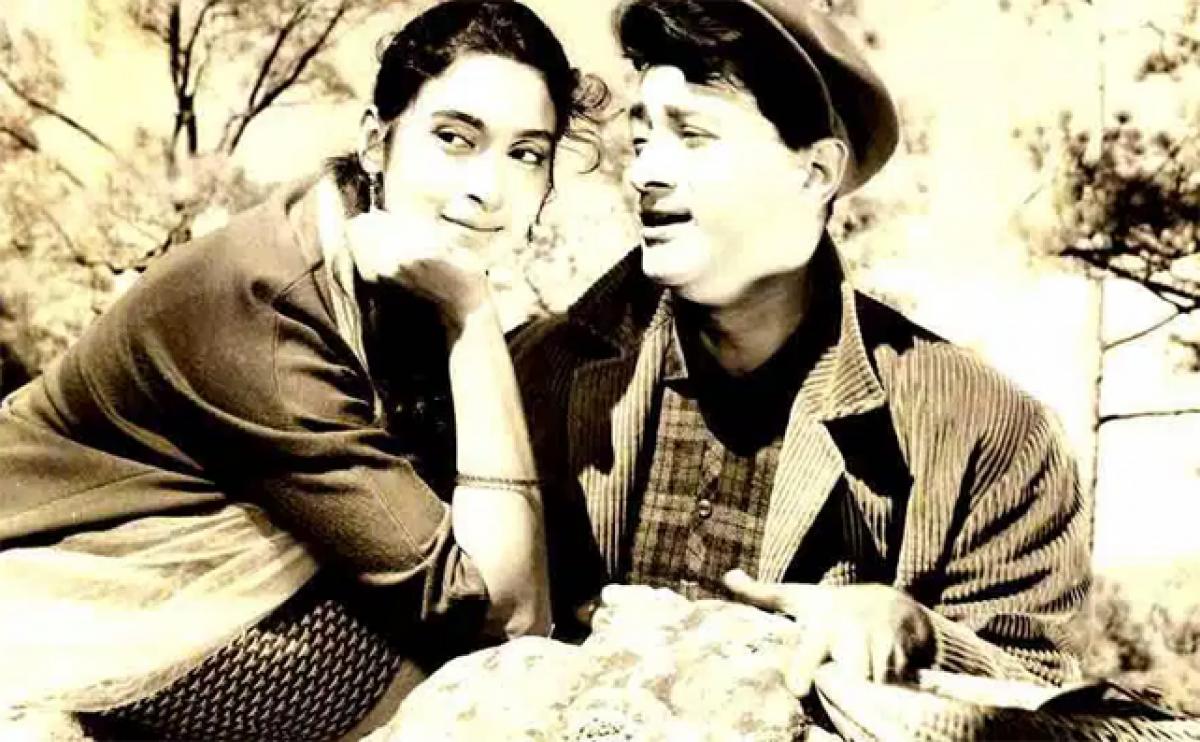Live
- Chanchalguda Jail Officials Say They Haven't Received Bail Papers Yet, Allu Arjun May Stay in Jail Tonight
- BJP leaders present evidence of illegal voters in Delhi, urge EC for swift action
- Exams will not be cancelled: BPSC chairman
- Nagesh Trophy: Karnataka, T.N win in Group A; Bihar, Rajasthan triumph in Group B
- YS Jagan condemns the arrest of Allu Arjun
- Economic and digital corridors to maritime connectivity, India and Italy building vision for future, says Italian Ambassador
- SMAT 2024: Patidar's heroics guide Madhya Pradesh to final after 13 years
- CCPA issues notices to 17 entities for violating direct selling rules
- Mamata expresses satisfaction over speedy conviction in minor girl rape-murder case
- Transparent Survey Process for Indiramma Housing Scheme Directed by District Collector
Just In

Gaata Rahe Mera Dil: In Bollywood, Every Song Has A Story. It is not difficult to stoke up a controversy. Just draw up a list of 10 or 20 or 50 or 100 best something and make it public. The more popular the topic, the more passionate the arguments it will engender. A list of 50 landmark Hindi film songs for instance.
Title: Gaata Rahe Mera Dil - 50 Classic Hindi Songs; Authors: Anirudha Bhattacharjee and Balaji Vittal; Publisher: HarperCollins India; Pages: 300; Price:Rs.350

It is not difficult to stoke up a controversy. Just draw up a list of 10 or 20 or 50 or 100 best something and make it public. The more popular the topic, the more passionate the arguments it will engender. A list of 50 landmark Hindi film songs for instance.
Leave alone the huge material you would have to sift through - over 100,000 songs at an conservative estimate, how do you frame objective criteria for your choice? The voice, the music, the lyrics, the picturisation, or the situation? And then in case of a film which has more than one popular song, which one can (and will) you choose?
It is on this quixotic quest that techies-cum-music aficionados Bhattacharjee and Vittal have embarked upon, in spite of the heartbreaks involved - they themselves admit to having to leave out some of their personal favourites. You may not agree with their selection, in full or at least part (I myself would only wholeheartedly support eight of their choices and have no objections to another nine) but they provide some compelling reasoning - convincing me to support their case for another four.
The journey, beginning with K.L. Saigal's "Babul Mora Naihar" in "Street Singer" in 1938 and stopping with "Dil hai chota sa, Choti si aasha" in "Roja" - A.R.Rehman's debut film - in 1993 (on the grounds that "for a song to be regarded as a 'classic', it needs to resonate with listeners at least twenty years after they were first enraptured with it") is fascinating, and span a wide gamut - songs happy and lighthearted, sad and philosophical, of 'ghostly' provenance, ghazals, qawwalis, bhajans, disco, cabaret, youth anthems - you name it and it will probably be there.
Though most singers, male and female, composers and lyricists manage to achieve fairly equitable representation, the final shape of the product turns out to be surprising - especially for male actors! Rajesh Khanna features in the most (five), Raj Kapoor (three) manages to just edge ahead of sibling Shammi and contemporary Dilip Kumar (two each) but has to share honours with Dev Anand, Bharat Bhushan, Guru Dutt, Sanjeev Kumar and Manoj Kumar. Amitabh Bachchan has to be content with just one - on par with Raj Kiran, Navin Nischol, Tariq, Sudhir, Pran, Farooque Sheikh and Amol Palekar.
Partisans might also carp at the absence of singers like Noor Jehan, Shamshad Begum and Mahendra Kapoor or composer Ravi (among others), but on the other hand, the selection gives due to composers Pankaj Mullick, Anil Biswas and Jaidev, lyricists Prem Dhawan and Raja Mehdi Ali Khan and the incomparable but sadly under-utilised singers like Pandit Shiv Dayal Batish and Vani Jairam.
The authors, whose debut work on RD. Burman won the President's Award for the Best Book on Cinema, enliven each song they present with key details of its making, the music arrangement (which sometimes gets a little too technical for the average reader) and anecdotes - some of which are mind-blowing. "Barsaat Ki Raat" featured 10 playback singers (five male and five female) and its iconic qawwali "Na to Karvan ki talaash hai.."(No #13 here) was based on a compoisition of Ustad Fateh Ali Khan's (Nusrat's father).
That pessimistic plaint "Kasme vade pyaar wafa" in Manoj Kumar's "Upkar" had an interesting genesis. Composer Anandji Shah, of the Kalyanji-Anandji duo, was telling lyricist Indeevar of how an overseas acquaintance - a young Indian banker in Tanzania - gave his heart to a visiting Indian girl and promised to come and marry her but they found out she was marrying someone else and wondered how to break the news to him.
As he remarked all promises and love were just words and unreliable, Indeevar said this could make a good lyric and they both hurried home and worked on it till early morning. And the banker? 10 years down, he made a slick gangster film that became iconic. He was Chandra Barot and the film was "Don".
In Bollywood, not only does every story have songs but every song also has a story!

© 2024 Hyderabad Media House Limited/The Hans India. All rights reserved. Powered by hocalwire.com







